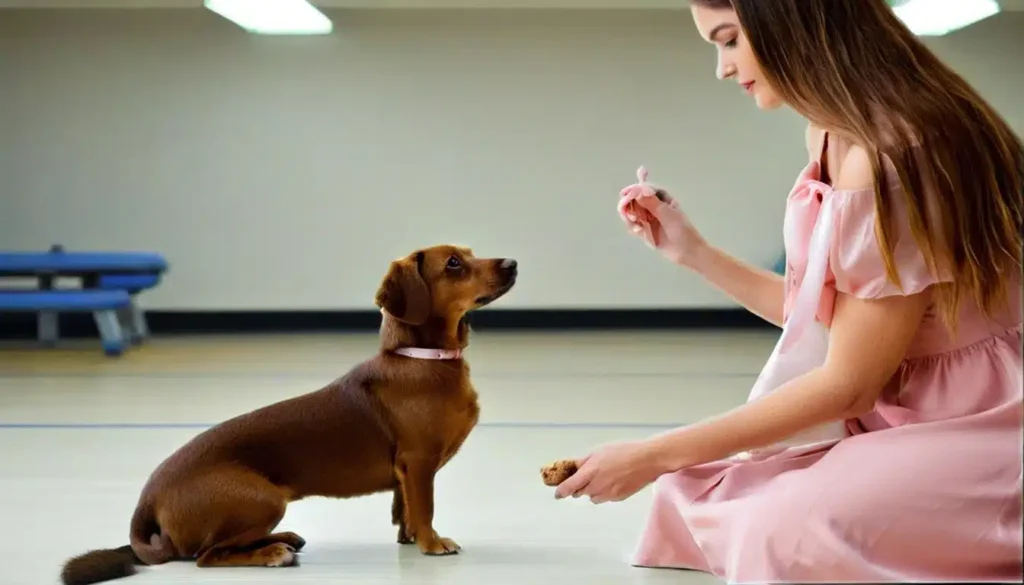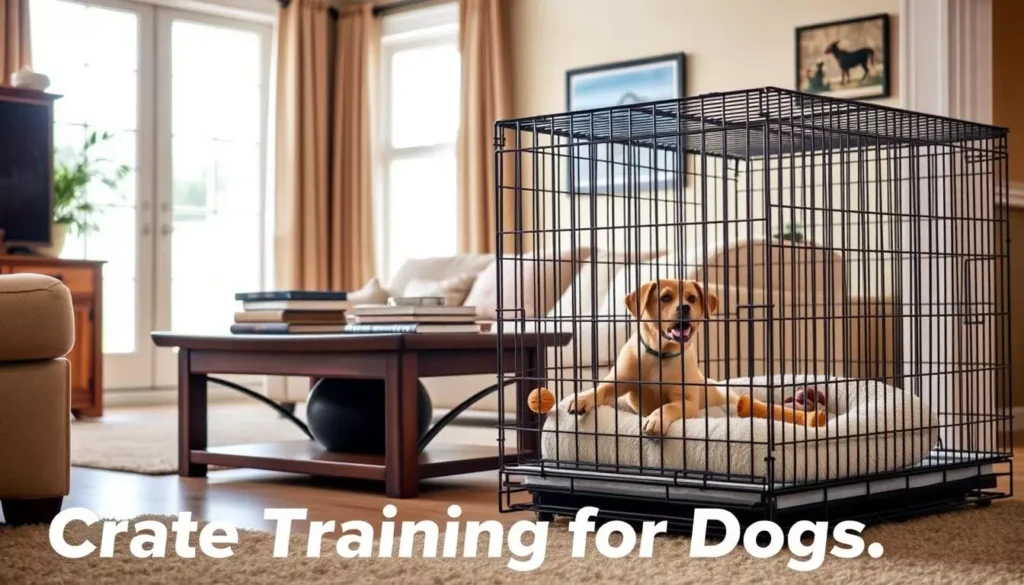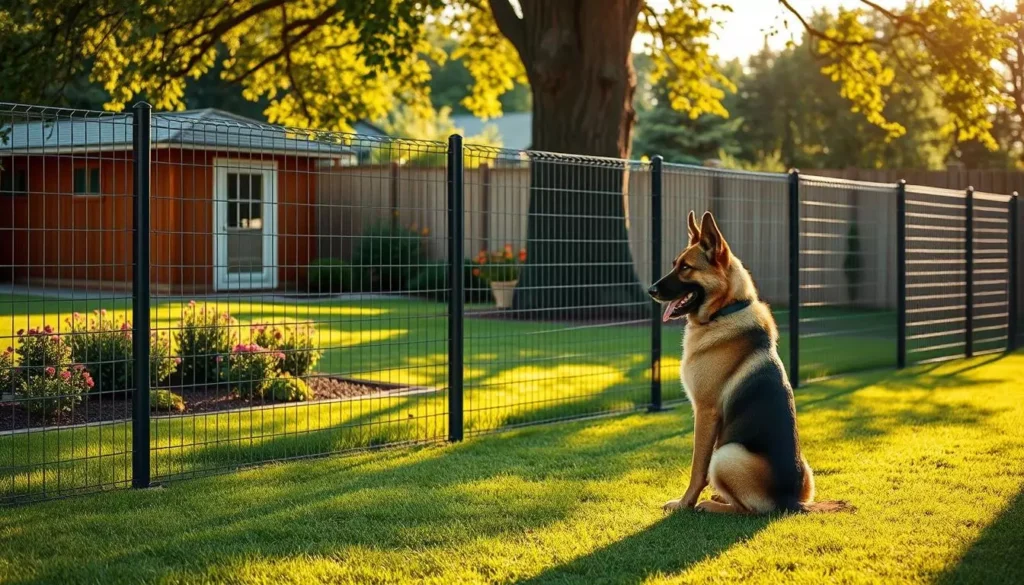I remember the first time a worried owner asked me, “Can she ever stop lunging at other dogs?” Their voice was as shaken as mine was that first winter in 2007. I learned then that good intentions and basic obedience aren't enough against fear, reactivity, or deep habits.
Over 17 years, I've worked with dogs in daycare, boarding, and through Animal Behavior College (ABCDT) in 2009. I've seen how advanced behavioural dog training changes lives. I offer in-home and remote sessions, and my programs range from basic obedience to advanced training. This shows me what works in real life.
This guide is for U.S. dog owners and trainers looking for practical, detailed advice. I'll explain why advanced dog training is crucial. I'll share tools and methods that work, and how to create lasting good dog behaviour training plans.
Key Takeaways
- Advanced behavioural dog training addresses problems basic obedience can’t fix.
- Real-world experience and formal credentials both matter for safe, effective work.
- Behavior modification for dogs uses evidence-based methods like counterconditioning and desensitization.
- Personalized plans, in-home practice, and clear client education produce the best outcomes.
- Tools are useful when chosen and used responsibly alongside positive reinforcement.
Why advanced behavioural dog training matters for real-life results
I work with owners who need more than basic obedience. Real life is full of busy streets, crowded parks, and tense moments at home. Advanced behavioural dog training helps build skills that work under stress and distraction.
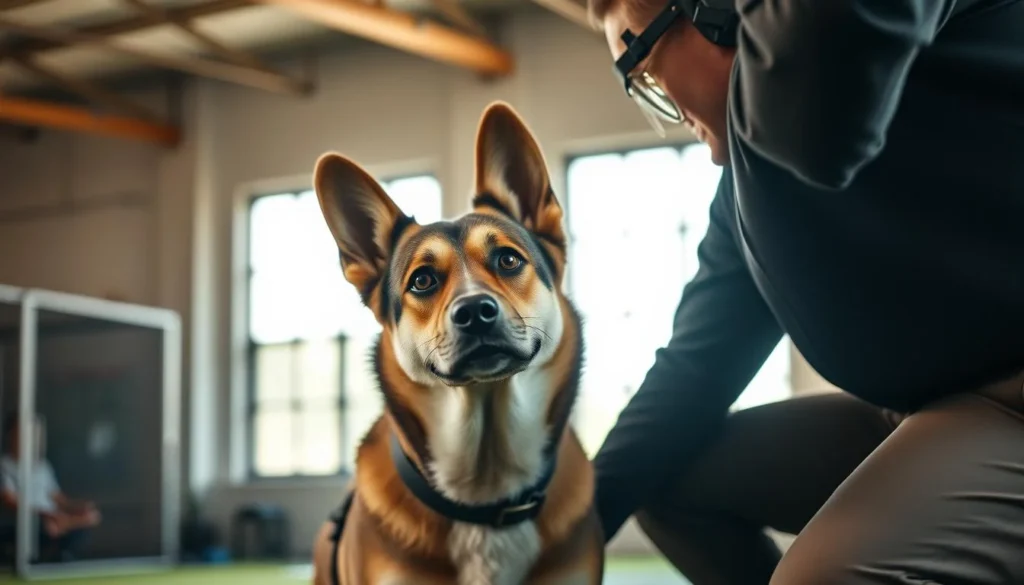
I see clear outcomes: improved safety in public, calmer homes, and a stronger bond between handler and dog. Programs like board-and-train or single-day sessions help dogs learn faster. Trainers with formal credentials use techniques from canine behavior therapy to tackle tough issues.
I focus on practical gains. Advanced positive reinforcement dog training teaches reliable cues and off-leash control. This lowers stress, reduces reactivity, and cuts the chance of bites. High peak behavioural dog training packages focus on real-world proofing and risk management for dogs with bite histories or extreme guarding.
I recommend a staged approach. Start with assessment, set clear goals, and move from foundation work into targeted behavioral therapy. This keeps owners safe and confident while giving dogs predictable structure and consistent expectations.
I value transparent policies. For high-risk cases, I require written agreements, muzzle conditioning when needed, and owner involvement. These safeguards let me apply canine behavior therapy and advanced behavioural dog training responsibly while protecting families and communities.
I guide owners toward lasting change. With patient, evidence-based methods and positive reinforcement dog training, many dogs regain calm and focus. High peak behavioural dog training aims for real-life reliability, not just short-term fixes.
Common behavioral problems targeted by advanced training
I help owners with dogs facing serious issues that simple classes can't solve. We need a detailed plan, clear goals, and a step-by-step approach. My methods combine science and practical tools to ensure safety for both families and dogs.
Reactivity and aggression management
Reactive dog training starts with identifying what triggers the dog. I use a step-by-step plan to lower the risk of bites and teach calm responses. This includes muzzle training, using long lines, and controlled introductions to keep everyone safe.
For advanced training, I might use special collars or harnesses to help control the dog. I choose the right tool for the dog and the training plan. This ensures the dog learns to respond calmly to triggers.
Separation anxiety and severe fear responses
Dealing with severe separation anxiety requires a careful, patient approach. I create a plan that includes gradual departures, enrichment, and exercises to build confidence. Small victories help reduce panic and teach dogs that being alone is okay.
For extreme fear, I use desensitization and counterconditioning. Sometimes, I also work with a vet behaviorist for medication advice. My programs include in-home training, Day Train sessions, and board-and-train options for controlled exposure.
Resource guarding and barrier frustration
Resource guarding is when dogs protect food, toys, or space. I teach controlled exchanges, safety agreements, and slow desensitization to change these behaviors. The goal is to create predictable routines that reduce stress around valuable items.
Barrier frustration and doorway issues can get out of hand quickly. I teach management techniques and alternative behaviors at thresholds. Advanced training for these issues combines tools, enrichment, and clear owner protocols to prevent relapse.
Core advanced dog training techniques and behavior shaping for dogs
I share methods for moving dogs from basic to advanced skills. I focus on marker timing, breaking down complex behaviors, and adjusting distance and distractions. These are key to advanced training and reliable results in daily life.
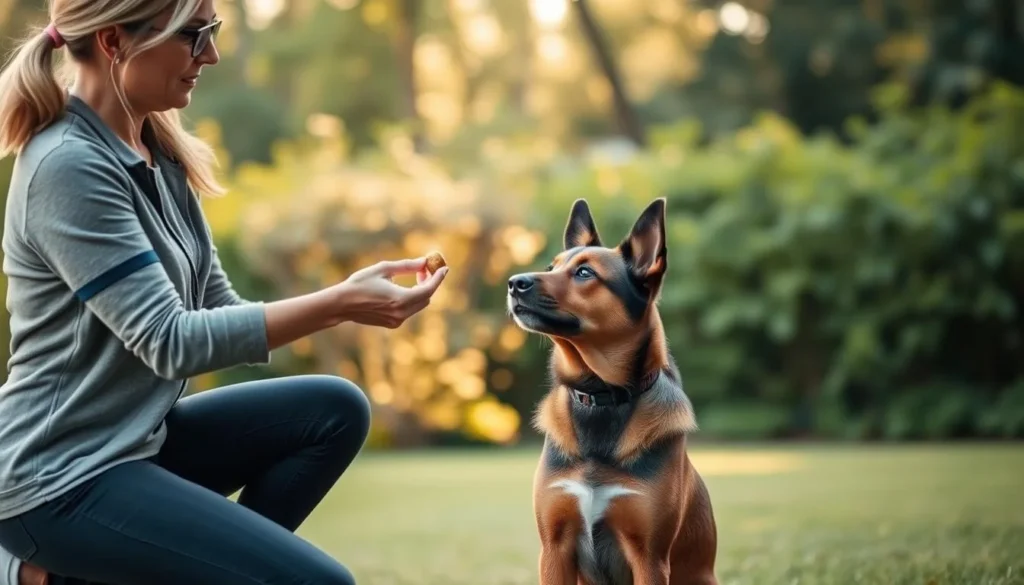
I teach variable reinforcement to keep dogs engaged. I reward exact responses and avoid confusion during distractions. This method helps shape behavior and prevents stress.
Positive reinforcement dog training at an advanced level
I use positive reinforcement as my main approach. I pair clear markers with rewards and then use treats less often. This builds motivation and prepares dogs for real tasks.
I add distance and duration gradually. I introduce distractions slowly and go back if the dog gets stressed. This is crucial for advanced obedience and helps dogs learn in different places.
Behavior modification for dogs using counterconditioning and desensitization
I create plans that increase intensity with rewards. I use desensitization to calm dogs and counterconditioning to change their emotional responses. These are key for treating fears and phobias.
I combine training with management to avoid setbacks. I use long lines and controlled drills to shape safe exposures. I also condition dogs to tools gently, keeping them calm and trusting.
Using tools responsibly in advanced training
I see tools as part of the training, not shortcuts. I condition dogs to wear head collars and harnesses so they're comfortable. This keeps trust and allows for safer training on tough behaviors.
I pick tools based on the dog's needs and ethical standards. I track progress and adjust tool use as needed. This keeps training humane and meets professional standards.
| Technique | Primary Purpose | Practical Steps | When to Use |
|---|---|---|---|
| Marker timing | Pinpoint desired response | Click or verbal marker, immediate reward, tighten criteria gradually | Shaping new or precise behaviors |
| Variable reinforcement | Maintain robust performance | Shift from continuous to random reward patterns over sessions | After reliable response under low distraction |
| Graduated exposure | Reduce fear and reactivity | Build exposure steps, pair with rewards, move only at calm progress | Fear responses, reactivity to stimuli |
| Counterconditioning | Change emotional valence | Associate trigger with high-value reward, increase intensity slowly | Phobias, strong negative associations |
| Proofing under distraction | Generalize cues | Introduce distractions incrementally, use distance/duration scaling | Public access skills and off-leash work |
| Tool conditioning | Ensure humane equipment use | Pair equipment with treats, short sessions, monitor stress signs | Muzzles, head collars, long lines, harness transitions |
Designing a personalized advanced training plan
I start by gathering all the important details about your dog. This includes their history, environment, and any past incidents. I also set clear goals for what we want to achieve.
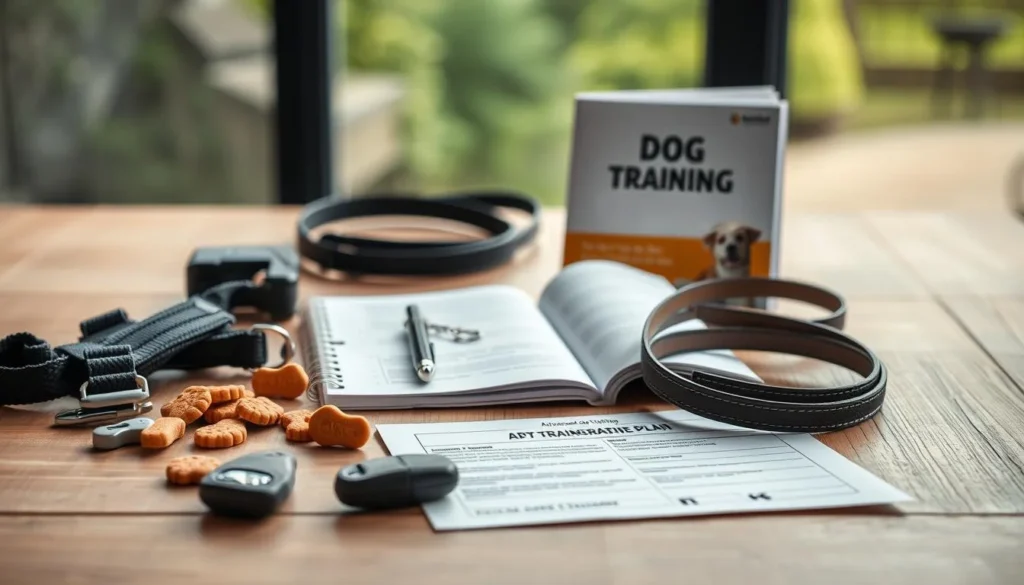
Assessment and goal setting
I conduct a detailed interview to understand your dog's routine and your priorities. I then test their current behavior with controlled exercises. This helps me set specific goals that we can track together.
I make sure the plan is clear and easy for everyone to follow. For more challenging cases, I include special protocols and agreements. This way, we can all stay on the same page.
Session types and progression
I offer different training options, including in-home sessions and group classes. I also provide remote coaching for those who prefer it. This way, everyone can find a training plan that fits their needs and budget.
Our training sessions start with basic exercises and gradually get more challenging. We practice walking on a leash, following commands even when distracted, and more. I pay close attention to how well you're doing in each session.
Client education and homework
I believe in teaching you how to train your dog. I show you how to interview your dog, basic first aid, and how to use rewards effectively. This helps your dog learn faster and keeps them on track.
For homework, I give you simple tasks that you can do at home. I also have clear policies for cancellations and what to expect during sessions. Regular updates keep you involved and motivated.
Advanced canine training methods used by professionals
Professionals mix classroom learning, hands-on practice, and real-world tests to create reliable dogs. Training that works in public starts with a clear plan and ends with results owners can trust.
I base my training on proven programs. Schools like Animal Behavior College and Animal Behavior Institute offer formal training. They combine science with practical hours, leading to important certifications.
I tailor training to each dog and owner. Private sessions help with sensitive issues. Group classes teach dogs to handle distractions. Remote coaching keeps owners on track between lessons. Board-and-train programs speed up progress with intense focus.
I track progress with clear goals. I measure distance, time, and distractions for obedience tasks. I also count incidents and check owner confidence. These signs show if training works in everyday life.
I believe in ongoing learning and guidance. Trainers who get supervised field hours and follow coursework stay at high standards. A specialized certificate in canine training and behavior often requires practical hours to back up classroom learning.
I create special paths for service work, CGC prep, sports, or tricks. Programs at top kennels and schools assess each dog first. This ensures the right match, making progress feel natural and measurable.
I keep skills sharp with maintenance plans. Regular refreshers, real-world practice, and owner coaching prevent skills from fading. When trainers use structured goals and consistent follow-up, dogs become more reliable and incidents decrease.
Tools, equipment, and safety protocols in advanced behavioral dog training
I choose gear that keeps everyone safe and helps dogs change their behavior. It's all about finding the right fit, function, and understanding the dog's past. I start by introducing new equipment slowly, so dogs feel comfortable before we add more pressure or distance.
Selection and ethical use of training tools
I match the right tools to the dog's needs. For calm walks, I use back-clip harnesses. Front-clip harnesses help dogs that pull, and head collars are for close control near triggers. Martingale collars are great for sighthounds and dogs that slip collars. Leashes vary from short to 30 feet for recall practice.
I make sure every tool fits well and is correctly placed before we start. This ensures safety and effectiveness.
I teach dogs to accept every piece of equipment. For dogs with bite histories or high arousal, muzzle conditioning is key. I use treats and stepwise pairing to make the muzzle a neutral or positive cue. Written agreements and informed consent are needed for high-risk plans, outlining the ethical use of tools and limits on aversive methods.
Safety planning for high-risk cases
For cases involving aggression or severe fear, I create detailed safety plans. These plans include emergency contacts, first-aid supplies, and clear triggers to avoid. Meet-and-greets and formal assessments are required before any board-and-train placement.
I train staff in canine CPR and basic emergency handling. We practice removing entangling gear and staged socialization under controlled conditions. Long line training is common to control distance and shape recall and impulse control. Each session ends with a debrief and a written update for owners, explaining the steps taken and the reasons behind tool choices.
I follow certification standards from groups like the Association of Professional Dog Trainers and the Certification Council for Professional Dog Trainers. This commitment ensures safety and welfare are always the focus in behavior change.
Case studies and real client examples from advanced behavioural dog training
I share brief case studies that show my training approach. Each example includes assessment, a plan for exposure, tools used, timeline, owner involvement, and results.
I start by measuring a dog's baseline behavior. This helps me set goals and choose the right tools. For dogs with a history of biting, I get a liability agreement.
I have a step-by-step plan for dogs with severe reactivity. The first step is safety and muzzle training. Then, I use controlled exposure and progressive proofing. Owners learn how to handle their dogs during handoffs.
Reactive dog to reliable public partner
Assessment: a Labrador mix reactive to strangers and dogs in parks. I measured reaction distance and trigger intensity across five sessions.
Plan: graduated exposure with distance management, reward-based counterconditioning, and leash handling drills. Tools: flat collar, long line, basket muzzle for public outings.
Timeline and owner role: weekly in-person sessions for six weeks, daily 10-minute homework, and one in-home handoff. Results: steady reduction in lunging, increased attention on handler, reliable recalls in moderate distraction.
Severe resource guarding resolved with behavior modification
Assessment: a small terrier with escalation around food and toys. I recorded guarding triggers and avoidance thresholds.
Plan: advanced dog behavior modification using desensitization and contingency training. I taught owners to trade high-value items and to offer predictable routines. Tools: barrier management and timed feeding protocols.
Timeline and owner role: four-week program with biweekly coaching and daily structured exchanges. Outcomes included softer approaches to resources, fewer incidents, and clear owner confidence during handoffs.
Board-and-train success story
Assessment-driven placement at a kennel offers immersive learning. I outline entry tests and create a tailored curriculum before the dog arrives.
Program: Country Pup Kennel-style template with four to eight weeks of focused work, one one-on-one session, and an in-home handoff. Emphasis on behavior shaping for dogs through consistent daily proofing and socialization days.
Tools and owner involvement: enrichment plans, progressive distance/duration metrics, and owner sessions during the final week. The immersive format often accelerates consistency because skills are practiced across varied contexts.
I track outcomes with objective measures: reduced incident counts, higher proofing levels, and owner-reported confidence. These case studies dog training examples show why consistent owner education at handoff is essential for lasting success in board-and-train success stories and advanced dog behavior modification.
Conclusion
Advanced behavioural dog training combines science, certified experts, and structured plans to tackle tough issues. It helps dogs change from being reactive or fearful to being reliable partners. This is done by using positive reinforcement and special tools.
I tailor each plan to fit the dog and family, offering in-home lessons, group classes, and more. Since 2007, I've been helping dogs and families with my ABCDT certification. I also offer remote options and follow strict safety protocols, including muzzle training for dogs with bite history.
My training is based on formal education, ongoing learning, and real-world experience. This ensures the training is effective and long-lasting. I also educate owners on how to maintain the progress made. If you're interested in a customized plan, book an assessment or get in touch. I'll guide you through every step, focusing on safety and science.


